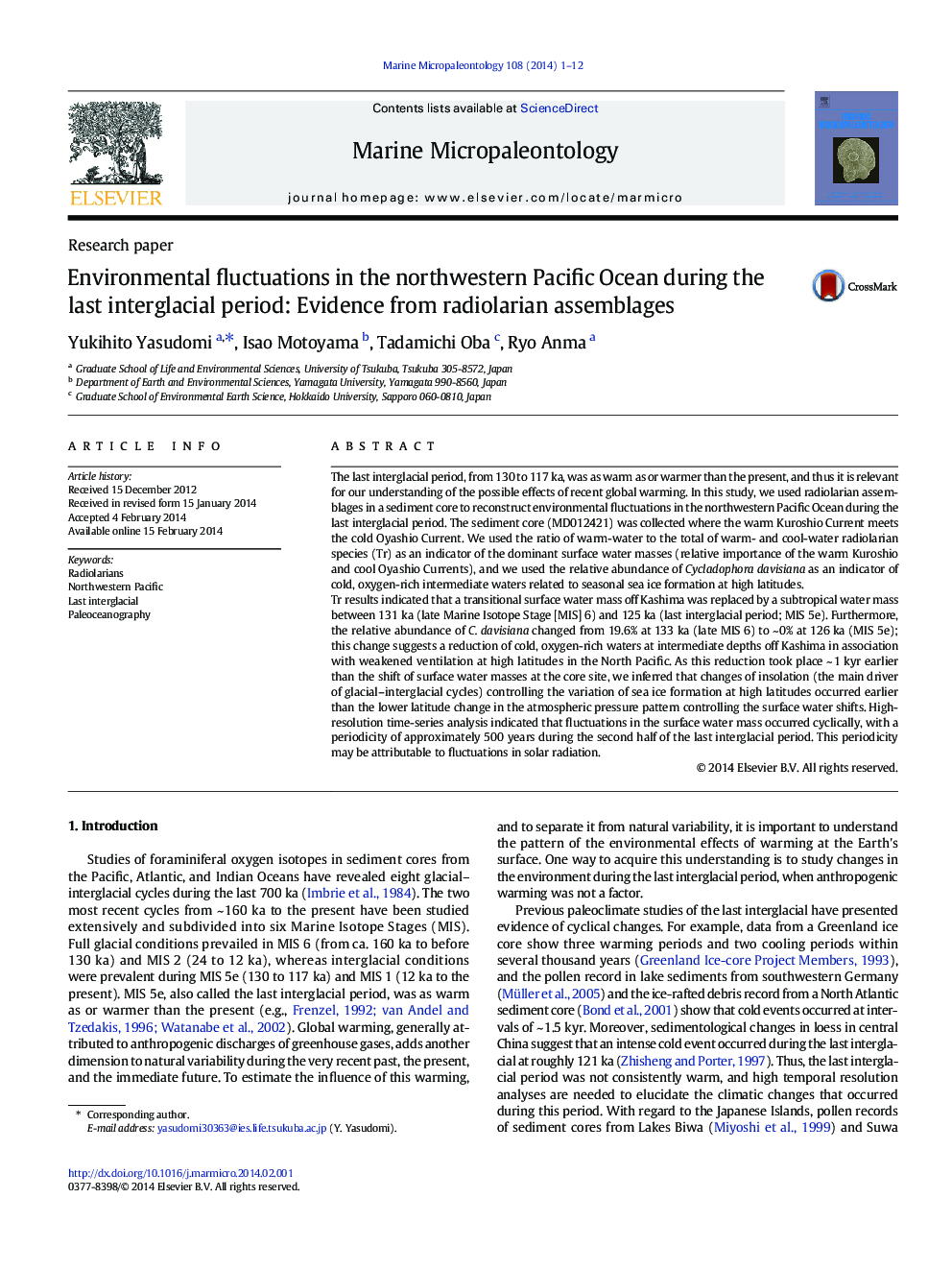| کد مقاله | کد نشریه | سال انتشار | مقاله انگلیسی | نسخه تمام متن |
|---|---|---|---|---|
| 4748841 | 1642177 | 2014 | 12 صفحه PDF | دانلود رایگان |
• Transitional surface water replaced by subtropical water during MIS 6 and 5e.
• Cold, oxygen-rich intermediate waters reduced during MIS 5e.
• Changes in solar radiation caused an ~ 500-year cycle in surface water properties.
The last interglacial period, from 130 to 117 ka, was as warm as or warmer than the present, and thus it is relevant for our understanding of the possible effects of recent global warming. In this study, we used radiolarian assemblages in a sediment core to reconstruct environmental fluctuations in the northwestern Pacific Ocean during the last interglacial period. The sediment core (MD012421) was collected where the warm Kuroshio Current meets the cold Oyashio Current. We used the ratio of warm-water to the total of warm- and cool-water radiolarian species (Tr) as an indicator of the dominant surface water masses (relative importance of the warm Kuroshio and cool Oyashio Currents), and we used the relative abundance of Cycladophora davisiana as an indicator of cold, oxygen-rich intermediate waters related to seasonal sea ice formation at high latitudes.Tr results indicated that a transitional surface water mass off Kashima was replaced by a subtropical water mass between 131 ka (late Marine Isotope Stage [MIS] 6) and 125 ka (last interglacial period; MIS 5e). Furthermore, the relative abundance of C. davisiana changed from 19.6% at 133 ka (late MIS 6) to ~ 0% at 126 ka (MIS 5e); this change suggests a reduction of cold, oxygen-rich waters at intermediate depths off Kashima in association with weakened ventilation at high latitudes in the North Pacific. As this reduction took place ~ 1 kyr earlier than the shift of surface water masses at the core site, we inferred that changes of insolation (the main driver of glacial–interglacial cycles) controlling the variation of sea ice formation at high latitudes occurred earlier than the lower latitude change in the atmospheric pressure pattern controlling the surface water shifts. High-resolution time-series analysis indicated that fluctuations in the surface water mass occurred cyclically, with a periodicity of approximately 500 years during the second half of the last interglacial period. This periodicity may be attributable to fluctuations in solar radiation.
Journal: Marine Micropaleontology - Volume 108, April 2014, Pages 1–12
